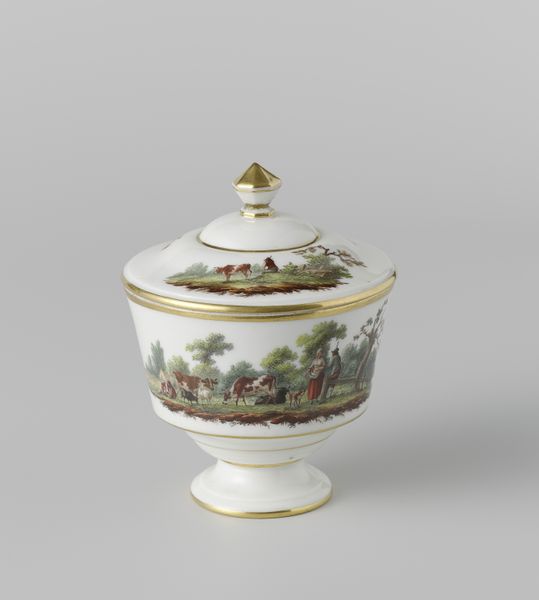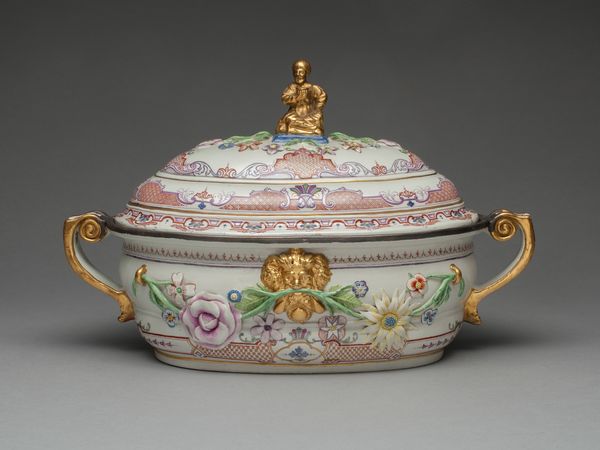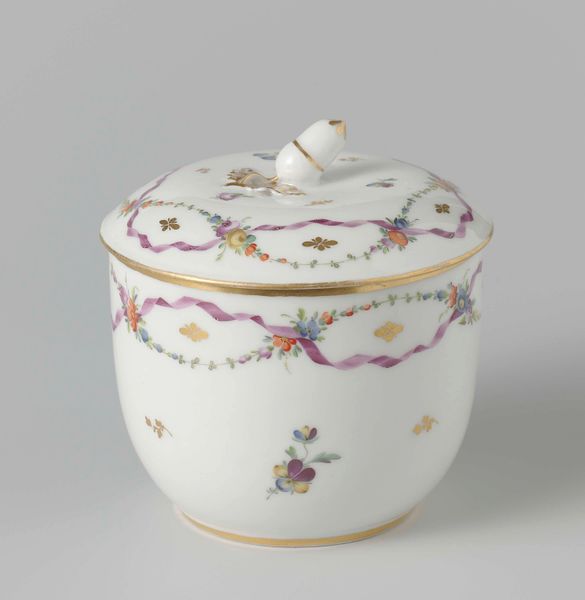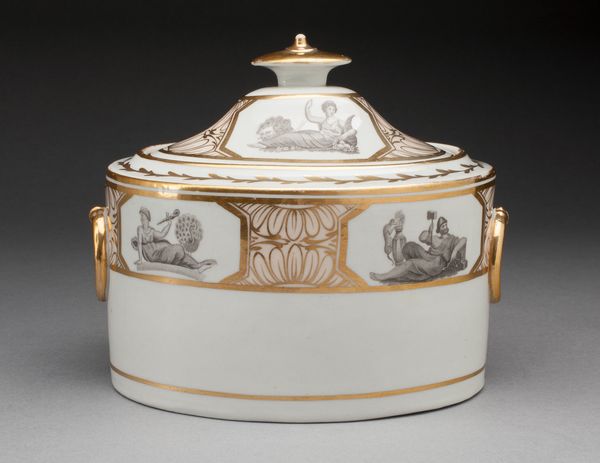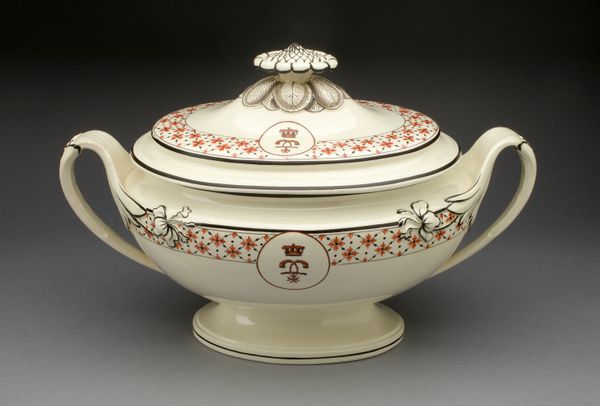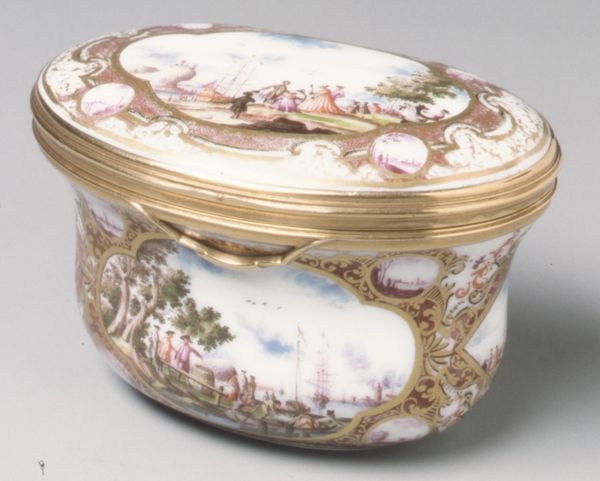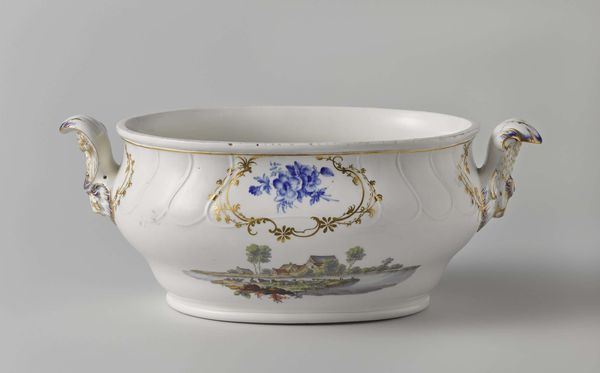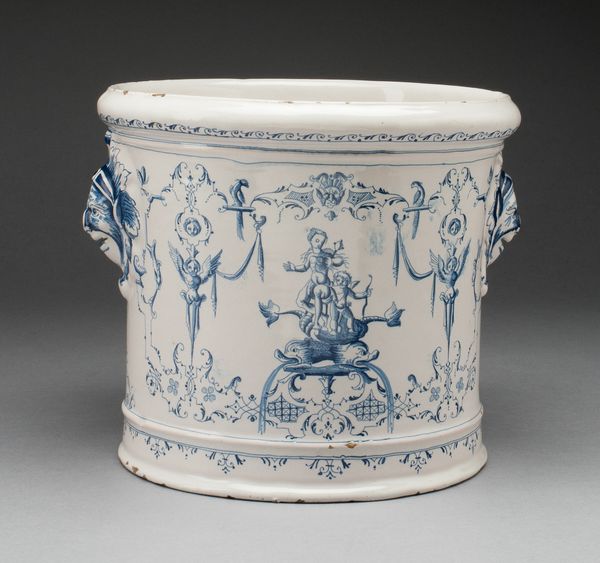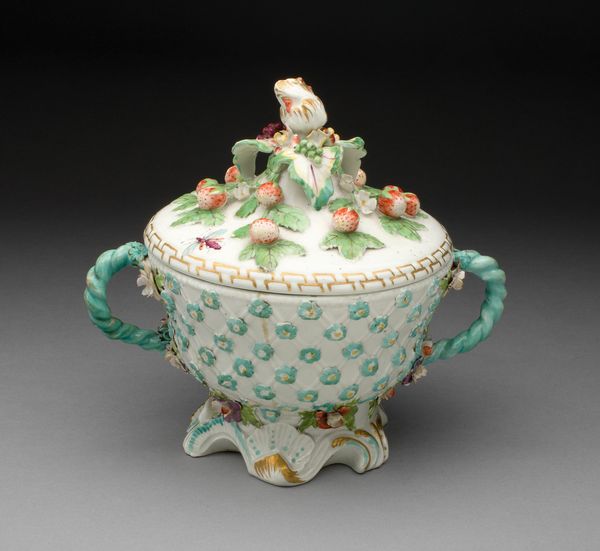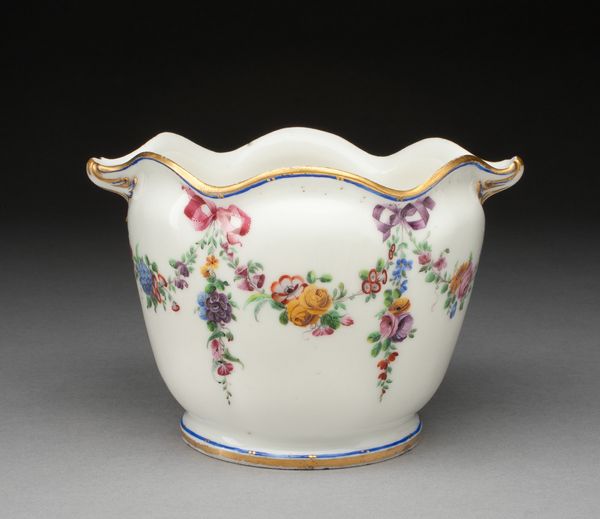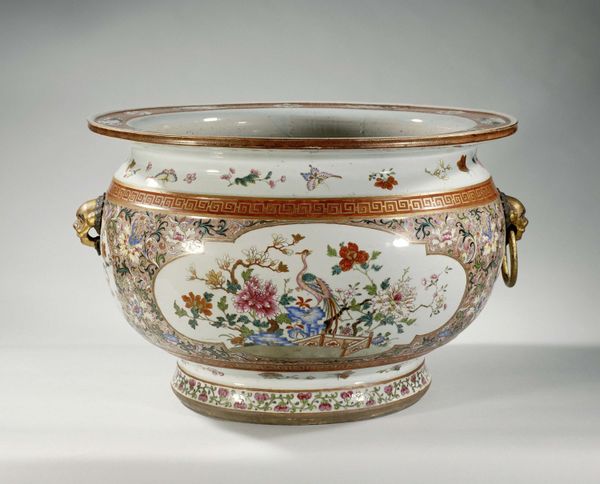
Inktstel, beschilderd met een landschap met figuren bij tenten c. 1778 - 1782
0:00
0:00
Dimensions: height 7.4 cm, width 15.0 cm, depth 12.9 cm, width 15.0 cm, depth 10.9 cm
Copyright: Rijks Museum: Open Domain
Editor: Here we have a Loosdrecht inkstand, dating from around 1778 to 1782. It’s ceramic, and the decoration includes a painted scene of figures near tents. The style feels so decorative. What stories can you tell me about it? Curator: Well, let's consider the time period and the fashion for such luxury items. Porcelain factories like Loosdrecht catered to a growing bourgeoisie eager to emulate aristocratic tastes. How do you think an inkstand like this might reflect social values or status? Editor: I guess owning something so finely made would have been a status symbol? It also seems like handwriting and letter writing must have been pretty important then. Curator: Precisely! Literacy and correspondence were becoming increasingly vital in commerce and social life. This inkstand isn't just functional; it’s a declaration. And look at the scenes depicted - these often referenced idealized versions of life, pastoral settings, and even exotic locales to showcase a worldliness the owner might aspire to. Do these depictions tie to existing power structures, maybe ideas about colonialism and idealized views of other lands? Editor: I see what you mean. It's not just a pretty object, but reflects broader social and even political trends. That’s a whole other layer I wasn’t even thinking about. Curator: Exactly! By understanding the history, we recognize how everyday objects carried significant meaning and played an active role in society. It changes how you view these kinds of pieces, doesn't it? Editor: It really does! I'll never look at a fancy inkstand the same way again. Thanks!
Comments
No comments
Be the first to comment and join the conversation on the ultimate creative platform.

